Dragonflies are great at controlling populations of pest insects, including mosquitoes and flies. A single dragonfly can eat anywhere between 30 and hundreds of mosquitoes per day. Because they’re top predators in the insect world, they can help keep a balance with the insects in your backyard.
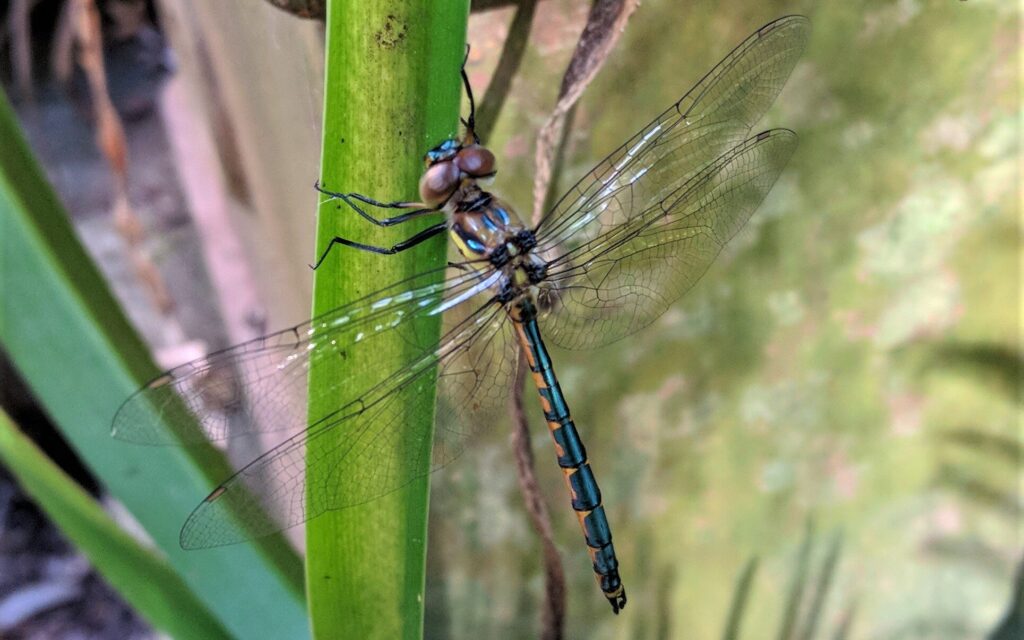
Dragonflies hunt insects like mosquitos in both their larval and adult forms. Dragonfly nymphs actively seek mosquito larvae as part of their diet. A single dragonfly nymph can consume hundreds of mosquito larvae during its development.
As adults, dragonflies continue their role as mosquito hunters. With exceptional flying abilities and keen eyesight, they prey on adult mosquitoes reducing the population before they have a chance to lay eggs.
Follow these steps to encourage dragonflies to your backyard and maximize their impact on mosquito control:
- Create or maintain ponds, wetlands and other water bodies to provide suitable habitats for dragonfly nymphs.
- Minimize the use of chemical pesticides, as these can harm dragonflies and disrupt the delicate ecological balance.
- Incorporate native plants around water bodies to provide suitable resting spots and breeding sites for adult dragonflies.
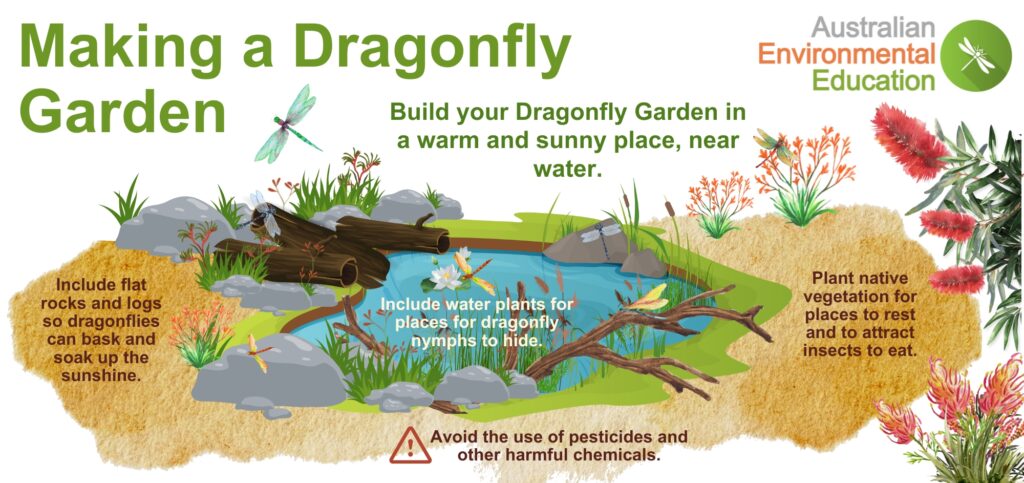
Research Dragonfly Species in Your Area
Find out which species of dragonfly are native to your area. Different species have specific habitat requirements, and tailoring your garden to their needs will attract a bigger variety. Consult local field guides or search on the iNaturalist Australia for information on dragonfly species in your area.
Choose the Right Location
Dragonflies love sunny spots with plenty of warmth, so choose a location for your garden that receives ample sunlight throughout the day. Dragonflies spend a significant part of their life in and around aquatic environments. They lay their eggs in the water, so they need access to water as part of their lifecycle. If you aren’t putting in a pond build your dragonfly garden near a water source.
Incorporate Water Features
You can create an above ground pond in a large pot or an in ground pond with a prefabricated pond or using pond liner. Add materials like rocks, gravel, branches and plants to provide suitable resting spots and breeding grounds. Ensure the water is clean and unpolluted. You can also add floating plants like water lilies for additional hiding spots.

Choose Dragonfly-Friendly Plants
Selecting the right plants is crucial to creating a dragonfly-friendly environment. A mix of native flowering plants and grasses that provide landing spots for dragonflies and attract the insects they feed on. Include plants of varying heights to create layers and provide shelter.
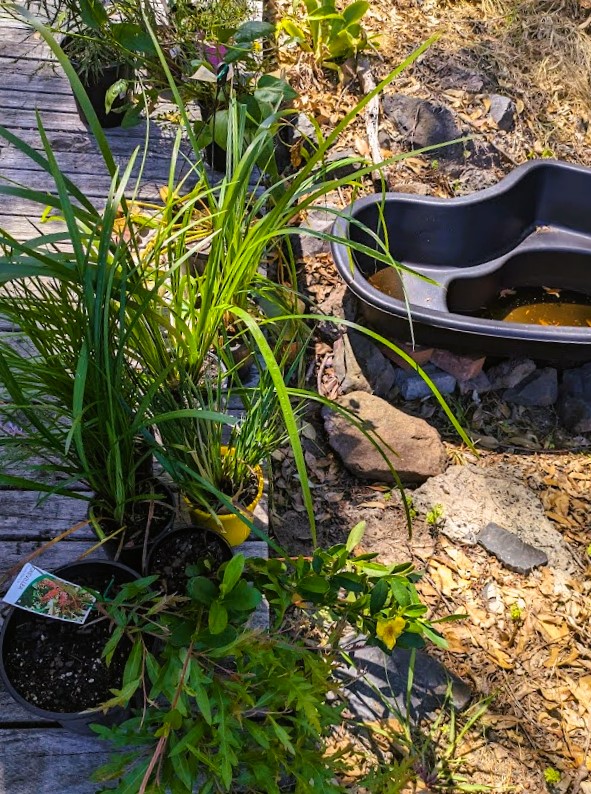
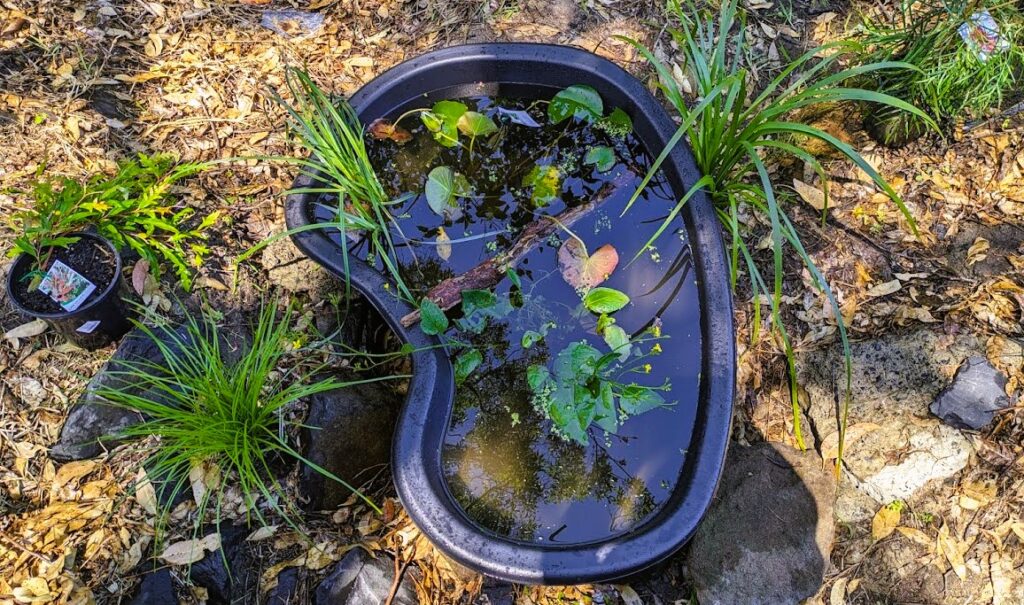
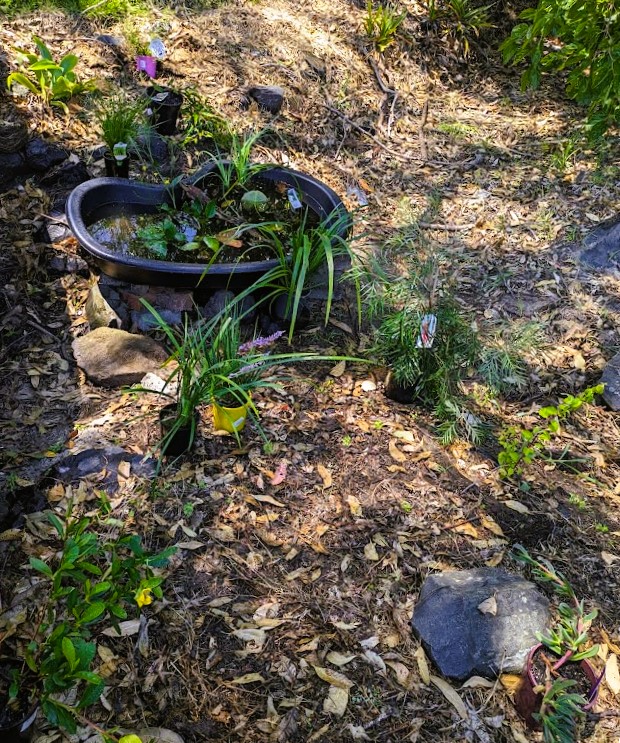
I sourced everything from the local nursery and brought some different ground covers including a Grevillia and Pigface to stabilised the ground surrounding the pond. I also included a couple of different species of Lomandra and a Kangaroo Paw. To attract insects and to provide height I went with 2 more Grevillias.
Most importantly were the water plants; I put in 3 different plants including a Water Lilly. An added advantage is that any aquatic invertebrates that hitched a ride in the plants should be local.
Create Sunning and Resting Spots
Dragonflies love to bask in the sun, and providing suitable sunning spots is essential for their well-being. Incorporate flat rocks or logs strategically placed around your garden where dragonflies can rest and warm their bodies. These areas also serve as excellent vantage points for hunting insects.
Minimize Pesticide Use
To create a thriving dragonfly garden, it’s crucial to minimize pesticide use. Dragonflies are predators and chemical pesticides to kill mosquitoes can harm them as well. Use organic alternatives to maintain a healthy and balanced ecosystem.
Maintain a Balanced Ecosystem
A successful dragonfly garden relies on a balanced ecosystem. Encourage biodiversity by incorporating a mix of plants to provide a diversity habitats. Regularly maintain your garden by removing invasive species and keeping the water features clean.
Building a dragonfly garden is a rewarding endeavour that goes beyond just the aesthetics. By creating a habitat that caters to the needs of dragonflies, you contribute to the overall health of your backyard ecosystem. With a little effort and thoughtful planning, you can turn your outdoor space into a sanctuary where dragonflies thrive.
Find out what else you can do to create a wildlife friendly backyard with the What’s in your Backyard activity series.

